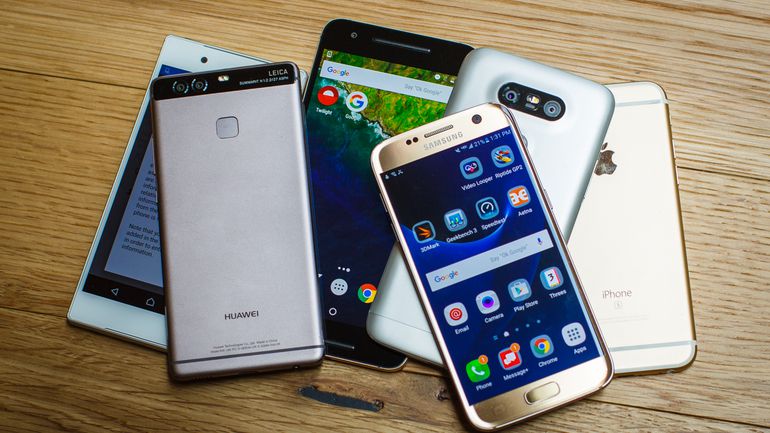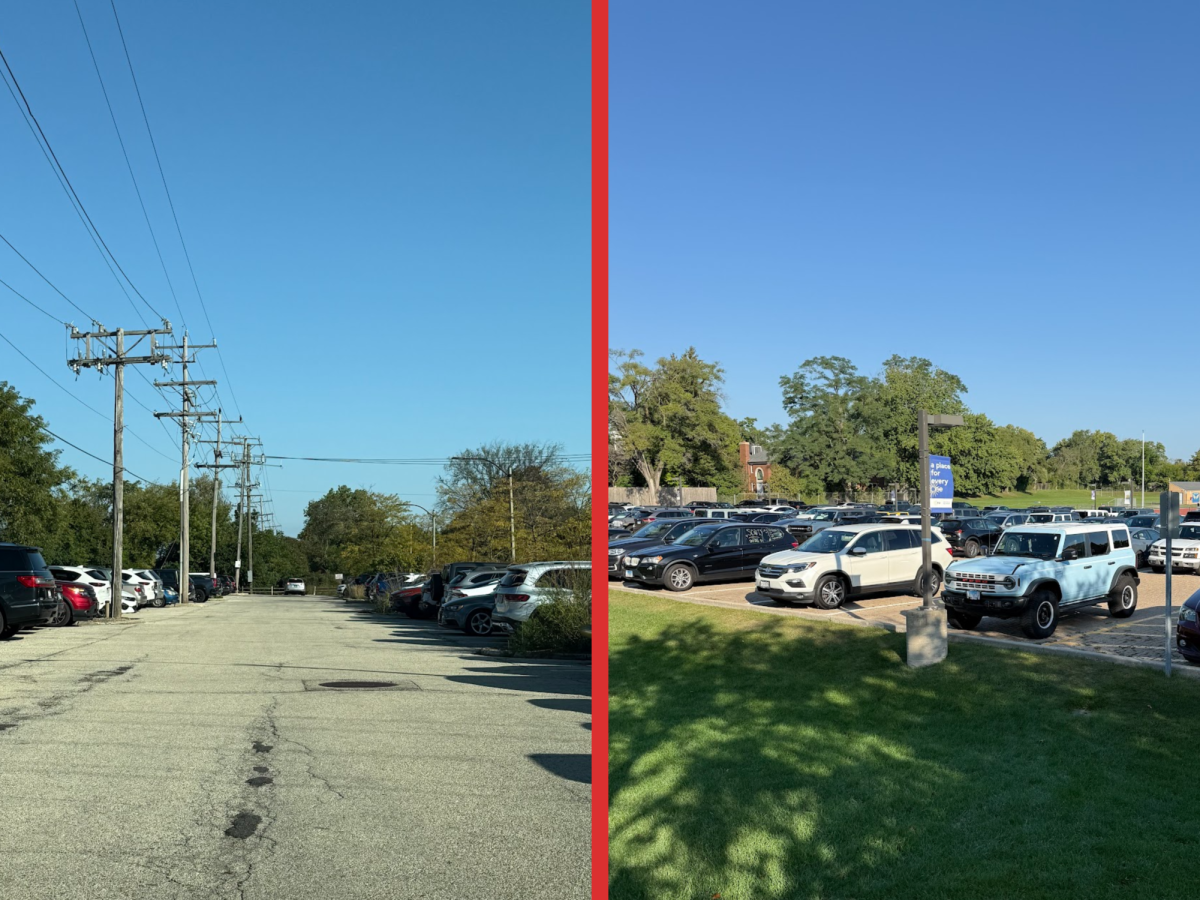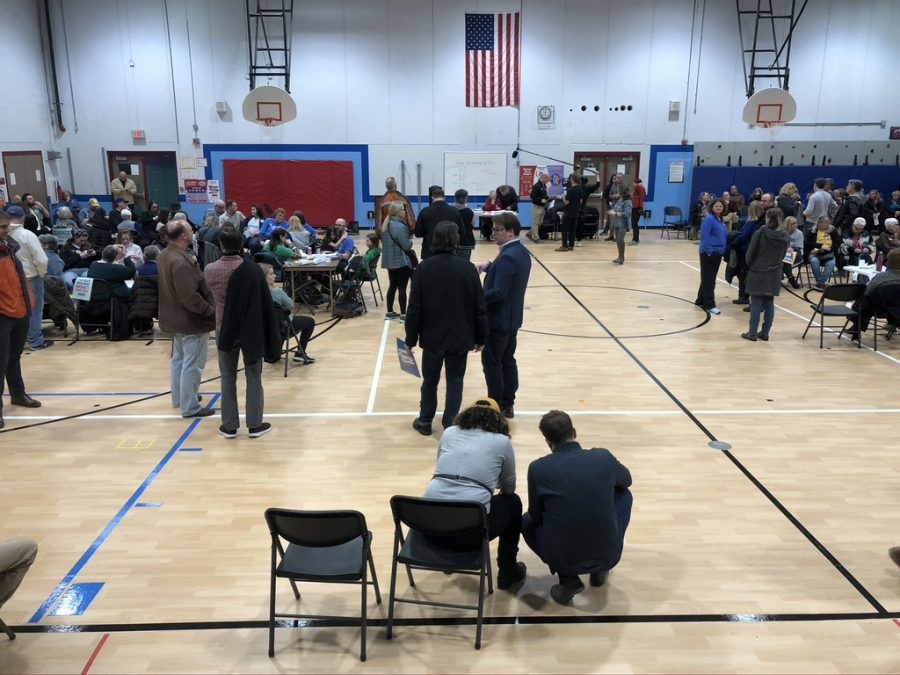The following post is a satire. All quotes, accounts, characters and plotlines used in the story are fabricated for authorial style and effect.
Three years ago, a surveyor of its crowded floors would have found that Lake Forest High School’s hallways were, without fail, jam-packed. For the five minute duration of its passing periods, one might have caught glimpses of the usual high school characteristics: paper scraps and plastic water bottles littering the floor, unzipped backpacks spilling paperback contents, looming seniors knocking unsuspecting freshmen into nearby lockers, stationed pods of sophomore girls conveniently blocking most major walkways, the inevitable exhausted gazes of juniors’ zombified eyes. However, one facet of the high school halls, though small enough to fit in the palm of a hand, would have stood out above the rest: the cell phones.
Years have passed since typical high school interactions (eye contact, verbal conversing, etc.) have been the norm, and the rise of the cell phone signifies its dominance over young users.
Many are shocked by Northwestern’s release of one startling teen statistic—a whopping 89% (and counting) American high schoolers admit to regarding their cell phones as their “best friend.”
In a contemporary world rampant with technological solutions, one bursting with the latest and greatest of all forms of mechanized innovations, it comes as no surprise that 94% of all teens in the United States own their own cellular phones. Widespread availability and access to “smart phones” is accompanied by ceaseless social media check-ups, as 86.5% of teen phone users have admitted to a habit of going online at least once every 49 seconds.
Lake Forest High School once bustled with the incessant chatter of student conversation, but today small-talk has gradually come to be replaced with the sound of tapping of thumbs against iPhone screens and the exchange of electronic communication. “Friendships” with cell phones have proved to be a low-volume alternative to human-human friendships.
“It gets quieter ever year,” noted one LFHS math teacher. “The phones have become huge in bringing levels of hallway rough-housing and typical high school ruckus to a minimum. The new silence and calm of the school is suspicious, almost threatening.” Although their growing popularity has proved to be integral in taming the once-unruly corridor’s of Lake Forest, cellphones’ prominence comes at a price.
“Sure, it comes at the cost of some of the kids’ safety,” he continued, referring to the two recent head-injuries at LFHS as a result of “absent-minded” phone usage. Alongside “don’t text and drive” cautionary posters, the school’s walls don new posters with the words “DON’T TEXT AND WALK” plastered across. “Just last year, we had two sophomores admitted to the ER after ramming their heads into lockers due to texting,” he recalled.
“I’d say it was worth it. I did it once, and I’d do it again.” Of two students that fell victim to the dangers of texting and walking, one student (who shall be referenced anonymously) commented on the incident, “every second spent without direct eye contact with my iPhone is a second wasted. But I think I should clarify, being concussed wasn’t the worst part really—it was that I didn’t go to the doctor until two weeks after the injury, ‘cause I had to keep up with my fantasy football league.” With a grin he added, “my team won.”
The student’s doctor disclosed that the medical report’s Cause of Injury section had listed, “cranial impact against metal locker, prolonged and uninterrupted eye contact with cell phone from distance of two inches (approx. 94 hours over the span of 13 days).” The student was admitted to Lake Forest High School last March and returned to classes in April.
Beyond the medical effects accompanying the increase in high school cell phone use, the social order has shifted to accommodate technological changes. Huddled masses of teen girls barricading side halls no longer convene to exchange daily updates and gossip, but instead stand idly to check peers’ Snapchat stories, even those whom they are “friends” with online, but don’t converse with in person. Discussions are limited to little more than Instagram captions and remarks such as, “go like my photo!” Within the past decade, the possession of smartphones has entirely remodeled the way that American high schoolers communicate with one another.
“It goes beyond simply a social trend or obligation,” said Doctor Marybeth Slater, a neurologist specialized in phone usage and its effect on the teenage mind. “The deep emotional connection that these high schoolers are feeling with their cellular devices originates from the limbic system of the temporal lobe. Excessive amounts of cell phone use have been proven to interfere with the part of the brain associated with love, causing many to feel a certain bond with their handhelds.”
A prime example of an American teen deeply convinced of a strong friendship with her cell phone would be LFHS junior Sarah Bronwyn. Sarah is one of many students at the school notorious for intentionally receiving tardies to put herself into in-school detentions, where she is able freely spend time with her closest confidante.
“I used to hang out with friends from school,” shared Sarah. “You know, I only used to use my phone to keep in touch with friends and stuff. We’d, like, text a lot, but I started to get bored. Then I started to realize that I’d rather stay home with my phone than follow up with plans we’d texted about. It’s so much easier to share their VSCO stuff to my collection or like their Instagram posts than have to actually talk with them. My phone’s better company, I guess.” With a shrug Sarah added, “we just have a lot in common.”
In the past three months, where time spent on cell phones in the building has climbed to unmatched heights, classroom participation levels have reached all-time lows. Many teachers have turned to phone confiscation, phone burnings, and phone fish-tank dunkings in response, but many students’ parents have threatened to sue, claiming that the confiscations have caused their children to experience “phantom vibrations” (the sensation of hearing or feeling a phone notification’s buzz when the phone is not with the student).
This is the reality we must face, one where likes on Instagram have become more valuable than human affirmation and computerized company’s lure has surpassed that of which human company can provide. Change with time is rapid and inevitable, but the facts have shown us that we can’t change this: we as humans simply can’t compete as best friends with the cell phone.











![The work of renowned cartoonist Gary Larson was cited as an inspiration by the quartet of filmmakers hired to write and direct the upcoming political melodrama The Dark Side. Another source was Shakespeare’s [redacted at the request of the LFHS Theatre Program], also known as “The Scottish Play.”](https://theforestscout.com/wp-content/uploads/2020/01/pasted-image-0-e1578272345182.png)

